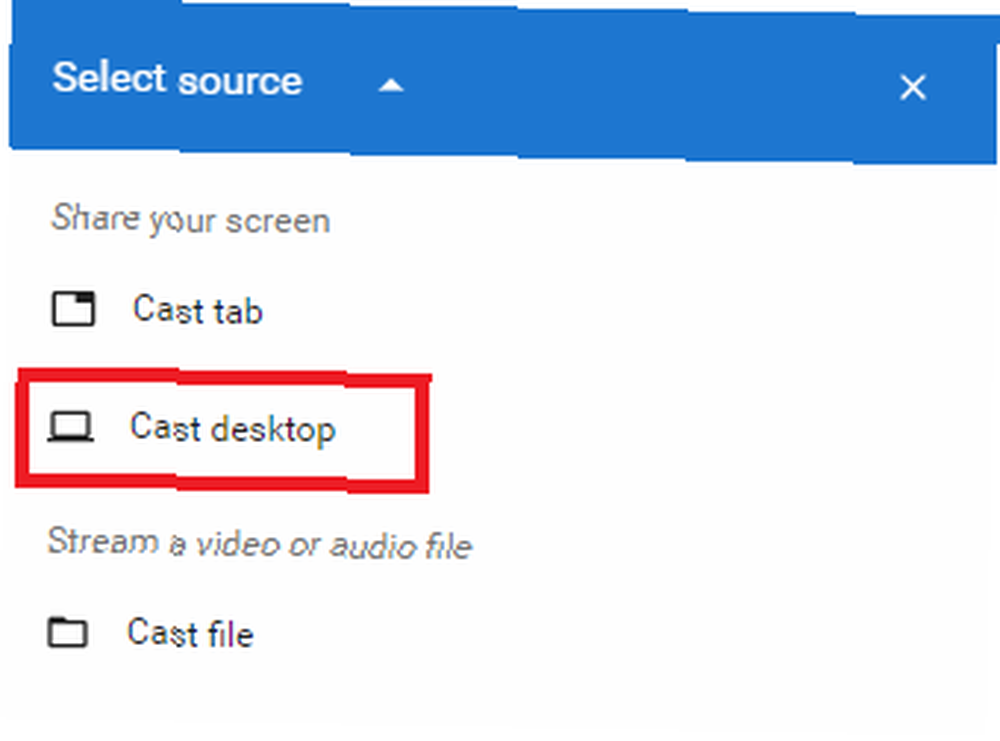
Joseph Goodman
5094
90474
706
Une application officielle Kodi est disponible pour la plupart des principaux appareils de diffusion en continu (Roku étant la seule exception notable).
Mais qu'en est-il de l'humble Chromecast? Vous ne pouvez pas installer d'applications sur les appareils Google au sens traditionnel du terme. Comment transférer votre contenu de votre support de stockage sur votre téléviseur??
Heureusement, il existe peu de façons de diffuser Kodi sur un Chromecast..
Où est stocké votre contenu multimédia?
Kodi n'est pas comme Plex. Pour un utilisateur moyen, faire de l'application un serveur central est un exercice non trivial. La méthode officielle nécessite une connaissance existante de MySQL. Vous pouvez également essayer une solution de contournement légèrement hacky pour partager votre bibliothèque multimédia Kodi sur plusieurs périphériques. Synchroniser ou partager votre bibliothèque multimédia Kodi sur plusieurs périphériques. Synchroniser ou partager votre bibliothèque multimédia Kodi sur plusieurs périphériques. Il existe deux façons de synchroniser ou de partager. votre bibliothèque multimédia Kodi sur plusieurs appareils. Dans cet article, nous expliquons la facilité. .
Quoi qu'il en soit, il est difficile de diffuser du contenu sur différents écrans de la maison..
En tant que tel, la meilleure méthode pour vous parmi les trois approches que nous allons discuter variera en fonction de l'emplacement de votre contenu. Par exemple, il est inutile d'utiliser les méthodes Android si toutes vos vidéos sont enregistrées sur votre ordinateur de bureau et si vous n'avez pas configuré les capacités du serveur..
1. Diffusez Kodi sur un Chromecast sous Android
La version Android de l'application Kodi n'offre pas de support natif pour Chromecast..
Par conséquent, le moyen le plus rapide de diffuser du contenu Kodi sur votre téléviseur consiste à utiliser la fonctionnalité Cast Screen intégrée à Android. Il vous permet de diffuser n'importe quoi sur votre écran, y compris des applications non prises en charge..
Selon la configuration de votre téléphone, vous pourrez peut-être activer la fonction à partir de la barre de notification en appuyant sur le bouton de la souris. Jeter icône (ça ressemble à une télévision). Si la fonctionnalité ne s'affiche pas, téléchargez l'application Google Home, appuyez sur le bouton Plus dans le coin supérieur gauche (trois lignes verticales) et sélectionnez Écran de casting / audio.

La totalité de votre écran d'ordinateur sera maintenant transmise à votre Chromecast. Pour diffuser Kodi, ouvrez simplement l'application et démarrez la lecture d'une vidéo.
Le seul inconvénient de cette approche est que vous devez accéder à votre ordinateur chaque fois que vous souhaitez lire ou mettre en pause votre vidéo. Si cela vous gêne, il peut être utile de passer un peu de temps à configurer une télécommande Kodi. Comment configurer une télécommande Kodi Comment configurer une télécommande Kodi Vous avez donc réussi à installer Kodi? Il ne reste plus qu’à ajouter une télécommande! Dans cet article, nous expliquons comment configurer facilement une télécommande Kodi. .
Autres façons de regarder Kodi
Comme nous l'avons démontré, il est possible de regarder Kodi via un appareil Chromecast. Toutefois, si vous êtes un utilisateur inconditionnel de Kodi, il est probablement sage de considérer certaines de vos autres options..
Par exemple, vous pouvez choisir un bouclier Nvidia. Comme il utilise Android TV, il existe une application Kodi native que vous pouvez utiliser..
Pour en savoir plus sur l’utilisation de Kodi, consultez nos articles sur les meilleurs VPN pour Kodi 3 Des VPN gratuits pour Kodi (mais le meilleur VPN pour Kodi est payé) 3 des VPN gratuits pour Kodi (mais le meilleur VPN pour Kodi est payé) Les VPN pour Kodi existent, bien qu'ils ne soient pas les meilleurs. Cet article répertorie les meilleurs VPN gratuits spécialisés dans Kodi. et les meilleurs add-ons Kodi que vous pouvez installer dès maintenant.











